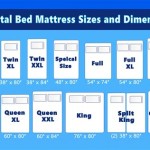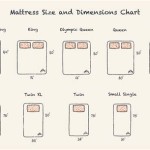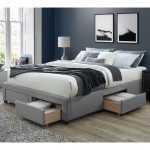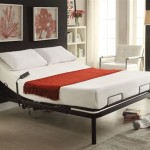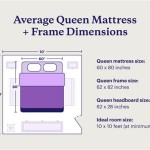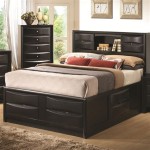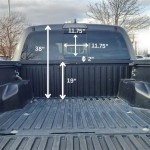King Size Bed Rug Sizes: A Comprehensive Guide
Selecting the appropriate rug size for a king-size bed is a crucial element in interior design, impacting both the aesthetics and functionality of a bedroom. A well-chosen rug can anchor the bed, define the space, and add warmth and texture, enhancing the overall ambiance. Conversely, an improperly sized rug can disrupt the visual balance of the room, making it appear smaller or cluttered. This article provides a detailed guide to understanding king-size bed rug sizes, exploring various layouts, and offering practical considerations to help homeowners make informed decisions.
The standard dimensions of a king-size bed are 76 inches wide and 80 inches long. However, these measurements can vary slightly depending on the manufacturer. It is always recommended to measure the specific bed frame before choosing a rug. The desired rug size extends beyond the bed's dimensions, creating a visually appealing and comfortable area around the bed. Understanding the relationship between the bed size and the rug size is essential for achieving a harmonious and balanced room design.
Determining the ideal rug size involves considering several factors beyond the bed's dimensions. These include the room's overall size, the placement of other furniture, the flooring material, and the desired aesthetic. A large bedroom can accommodate a more expansive rug that encompasses the entire bed and substantial areas on either side. A smaller bedroom, conversely, might require a more modestly sized rug that focuses on anchoring the bed without overwhelming the space. The placement of nightstands, dressers, and other furniture pieces also influences the rug size and placement to ensure a cohesive and functional layout.
Key Point 1: Standard Rug Size Options for King Beds
Several standard rug sizes are commonly used with king-size beds. These sizes offer different levels of coverage and aesthetic impact, catering to diverse preferences and room layouts.
8x10 Rugs: An 8x10 rug is generally considered a minimum size for a king bed. When placed under the bed, it typically allows for approximately 1-2 feet of rug extending beyond the sides and foot of the bed. This size works well in smaller bedrooms where maximizing floor space is essential. It provides a defined zone around the bed without completely covering the floor. This rug size generally leaves the nightstands partially or entirely off the rug. The focus here is to anchor the base of the bed.
9x12 Rugs: A 9x12 rug is a popular and versatile choice for king-size beds. It offers a more generous extension beyond the bed, typically providing 2-3 feet of coverage on the sides and at the foot of the bed. This size is suitable for medium to large bedrooms, creating a more luxurious and comfortable feel. The nightstands can be positioned entirely on the rug, contributing to a more cohesive and integrated look. This size rug is commonly recommended among interior designers.
10x14 Rugs: A 10x14 rug is the largest standard size typically used with king-size beds. It provides ample coverage, extending significantly beyond the bed on all sides. This size is ideal for large bedrooms where a grand and opulent aesthetic is desired. It allows for all furniture pieces, including nightstands and benches, to be fully positioned on the rug, creating a unified and luxurious space. However, in smaller rooms, a 10x14 rug can overwhelm the space and make it appear cramped.
Beyond these standard sizes, custom rugs can be created to suit specific room dimensions and design preferences. Working with a rug designer to create a custom size ensures a perfect fit and allows for personalized design elements.
Key Point 2: Rug Placement Strategies and Layouts
The placement of the rug under a king-size bed significantly impacts the room's visual balance and functionality. Different placement strategies can create various effects, catering to diverse design preferences and spatial constraints.
Under the Entire Bed: Placing the rug under the entire bed, including the headboard and nightstands, creates a cohesive and unified look. This approach works best with larger rugs (9x12 or 10x14) and in larger bedrooms where there is ample space. It anchors the entire bed area and defines it as a distinct zone within the room. This layout can reduce the visibility of the flooring, so it is most effective when the flooring is not the primary design feature.
Two-Thirds Coverage: This approach involves placing the rug under the bottom two-thirds of the bed, leaving the headboard and nightstands off the rug. This is a versatile option that works well with various rug sizes (8x10 or 9x12) and room dimensions. It provides sufficient coverage around the sides and foot of the bed while allowing the flooring to remain visible. This layout is beneficial when the flooring is a design element that complements the overall room aesthetic.
Runner Placement: Runners can be placed on either side of the bed to provide a soft landing for bare feet. This option works well when a full-size rug is not desired or when the room is particularly small. Runners can add warmth and texture to the room without overwhelming the space. It is important to ensure the runners are long enough to extend beyond the sides of the bed and wide enough to provide comfortable footing. Typically, runners are placed beside the length of the bed as opposed to a rug under the bed.
The choice of placement strategy should align with the room's overall design and functionality. Experimenting with different layouts before committing to a final placement can help determine the most visually appealing and practical option.
Key Point 3: Practical Considerations and Design Principles
Beyond size and placement, several practical considerations and design principles influence the selection of a rug for a king-size bed.
Material and Texture: The material and texture of the rug contribute significantly to the room's overall feel. Wool rugs are durable, soft, and naturally stain-resistant, making them a popular choice for bedrooms. Synthetic materials, such as nylon and polyester, are more affordable and easier to clean. The texture of the rug can range from plush and luxurious to flat and practical, depending on personal preference and lifestyle. A high-pile rug adds warmth and comfort, while a low-pile rug is more suitable for high-traffic areas.
Color and Pattern: The color and pattern of the rug should complement the room's existing color scheme and design style. A neutral-colored rug can create a calming and sophisticated atmosphere, while a bold-patterned rug can add visual interest and personality. Consider the existing wall color, bedding, and furniture when selecting a rug color and pattern. A rug with a subtle pattern can add texture without overwhelming the space, while a rug with a vibrant pattern can serve as a focal point.
Room Size and Layout: The size and layout of the bedroom play a crucial role in determining the appropriate rug size. In a small room, a larger rug can make the space feel smaller and more cramped. In a large room, a smaller rug can appear insignificant and out of place. Consider the placement of other furniture pieces, such as dressers, chairs, and tables, when selecting a rug size. Ensure the rug complements the overall layout and does not obstruct walkways or doorways.
Budget: Rug prices can vary significantly depending on the material, size, and design. Establishing a budget before starting the selection process can help narrow down the options and avoid overspending. Consider the long-term value of the rug when making a purchase. A higher-quality rug may be more expensive upfront but can last longer and require less maintenance, ultimately saving money in the long run.
Maintenance: Different rug materials require different levels of maintenance. Wool rugs should be professionally cleaned to avoid damage, while synthetic rugs can be spot-cleaned with mild soap and water. Consider the level of maintenance required when selecting a rug. A rug that is easy to clean and maintain is ideal for high-traffic areas and households with pets or children. Regular vacuuming can help prevent dirt and debris from accumulating in the rug fibers, prolonging its lifespan.
Choosing the right rug size for a king-size bed is an investment in the overall aesthetic and functionality of the bedroom. By considering the bed's dimensions, room size, placement strategies, and practical considerations, homeowners can select a rug that enhances the space and creates a comfortable and inviting atmosphere. Prioritizing quality, design, and functionality ensures a rug that complements the room's overall aesthetic and provides long-lasting value.

Rug Under Bed Sizes King Queen Double Child Images Bennetts Carpets

Rug Size For King Bed Rugs Sizes Guide How To Choose

Rug Size For King Bed The Best Layouts You Can Try Homilo

Everything To Know About Placing A Rug Under Your Bed

Choosing The Perfect Rug Size For Your Queen Bed 5 Tips A Cozy Be Home Design Carpet Rugs

Rug Size For King Bed The Only 7 Rules Tips You Actually Need

How To Choose Bedroom Rug Size

What Size Rug Should I Use Under A Bed Mcqueens Interiors

Rug Size For King Bed Rugs Sizes Guide How To Choose

A Guide To The Best Rug Size For Your Space


